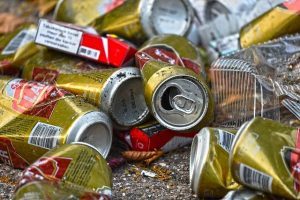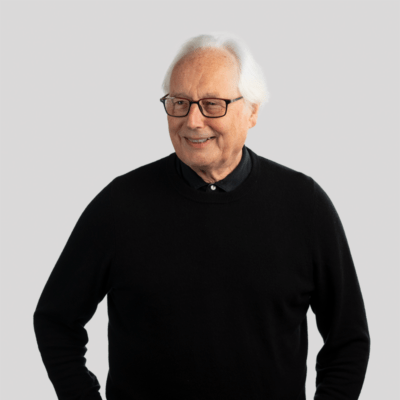Posted on: 24th February 2021 by Prof. Geoff Scamans
In this blog I’m going to focus on aluminium recycling and the aluminium “magic” description by Thomas Canby from almost half a century ago. Does this concept still apply today, specifically in the metal’s end-of-life recycled embodiment?
The Magic Metal
In an article “Aluminum the Magic Metal”, published by National Geographic in 1978, its author, Thomas Canby, approved the societal vision expressed by Nobel Prize-winning chemist Glenn T Seaborg, a former chairman of the US Atomic Energy Commission. He proposed that “the present materials situation is literally reversed: all waste and scrap – what are now called secondary metals – become our major resources, and our natural, untapped resources become our backup supplies.”
Canby predicted that when this day comes, versatile aluminium would play a major role.
Can deposits kick-start aluminium recycling
In 1978 aluminium recycling from end-of-life products was in its infancy. The annual US primary aluminium production was 5.4 million tonnes. However, they threw away three billion pounds (1.36 million tonnes) of aluminium each year. This was equivalent to the total US primary production twenty years earlier. The largest single scrap aluminium source was the beverage can.
Reynolds, well before Alcoa consumed them in 1999, reportedly “plunged” into can recycling offering 17 cents a pound (about 23 cans in 1978). Consequently, in 1977 they recycled 2.9 billion UBCs (Used Beverage Containers). This equated to 48% of the total collected across the US, and the company paid out $20 million. However, it proved that cash payment incentivised can recycling, whereas petrol coupons or charitable endeavours did not.
Straight cash payments of 10 cents a pound ($220/tonne) eventually established the can recycling habit. Money was the vital incentive. However, individual recyclers also felt that they were playing a role in improving the environment. Brewing companies like Coors and the Energetic Pearl Brewing company became the major can collectors. They shipped most of what they collected to Alcoa for remelting and can body sheet manufacture.
Separating the scrap

In 1977 the payment scheme resulted in more than 6 billion cans returned for recycling. In addition, technologists developed new ways to retrieve aluminium from urban waste.
Eddy currents, created by magnets, separated the aluminium from the waste stream. Figure 1 shows an early Eddy current separator developed by Raytheon under test at the US Bureau of Mines. This device, known as the “aluminum magnet”, repulsed shredded aluminium scrap and conveniently separated it from the waste stream.
A plant in Ames, Iowa, was the first US urban recycling facility to use this type of separation. Further plants soon followed in New Orleans and Milwaukee.
Barriers to UBC recycling
In 2013 Andres Tominaga Terukina, studying at the NTNU in Trondheim, presented his thesis “Barriers and solutions for closed-loop aluminium beverage can recycling” for a Masters in Industrial Ecology degree. His work concluded that the main barrier to reaching the high recycling targets set by the aluminium industry in the US remained the low recovery of UBCs. Almost 50% were still lost to landfill or incineration facilities, much the same as in 1978.
His results also showed that the surplus of alloying elements and the entry of impurity elements provide a limiting factor for the recyclability of cans in the future. This is due to the can body sheet alloy’s sensitivity to the entry of impurities. Unfortunately, this runs counter to the widespread “infinite” recyclability claims without caveats. He surmised that, to reach a 100% recycling rate, we would need a better UBC recovery supply chain, further technological developments for reprocessing aluminium cans and improved production yields.
Deposit schemes lead to high recycling rates
In 2017 the CRI reported that the aluminium UBC recycling rate in the US was 46.1%, except for the states where deposit schemes were in operation. In those states the rate leapt up to 82.5% showing the dramatic effect of these schemes. Generally, the US UBC recycling rates vary between lows of 40% and highs of 60% on an annual basis. This makes 50% a good estimate of the return rate.
In the period 1996 to 2006 the US was selling about 100 billion cans/year and recovering between 40 billion and 60 billion UBCs. This is directly in line with the recycling percentages. On average, during this period, each person in the US both recycled and wasted about 200 cans. Recycling rates in states that require a 5¢ or 10¢ deposit on beverage containers range from 70-95% for the ten states that have these deposit schemes.
Huge losses a blow to aluminium recycling

Between 1972 and 2005 the US had wasted more than 1.1 trillion cans. Since then we can estimate that a further 700 billion UBC’s have been landfilled, incinerated or littered. This puts the US well on track to a second trillion loss.
Another way of looking at this is that more than 27 million tonnes of aluminium cans, with a value of more than $30 billion, now lie buried and waiting for recovery. According to the CRI one trillion cans, lined up end to end, would stretch to the moon and back almost 160 times. What’s more, they could encircle the earth more than 3000 times.
A dull glow?
It is clear to me that the magic of aluminium has not shone as brightly as was predicted fifty years ago. However, there has never been a better time, or a more urgent need, to deliver on that magical vision through exploiting the closed loop recycling of end-of-life aluminium.
In a future blog I will look at the situation in the UK over a similar time frame. Finally, you may find another blog of mine interesting; Aluminium can recycling and the landfill debacle.



